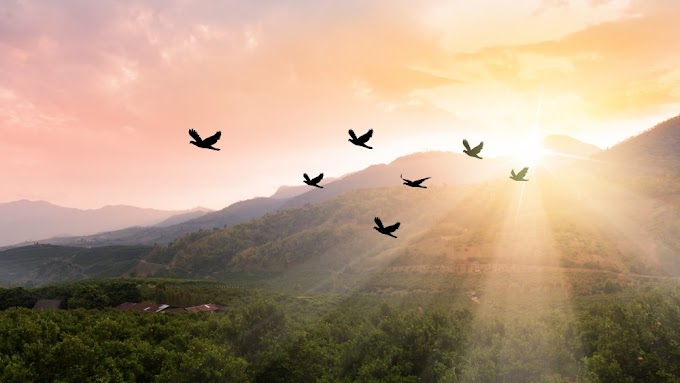The Journey of a Caterpillar to Becoming a Butterfly
The transformation of a caterpillar into a butterfly is a stunning process that has captivated people's attention for millennia. It's a tale of transition, development, and metamorphosis that teaches us about the beauty that may result from change and its force.
Everything begins with a little, unassuming egg. On a leaf or plant, a female butterfly deposits her eggs, which develop into small caterpillars. The larval stage of the butterfly life cycle is the caterpillar, which primarily focuses on developing and consuming food.
The caterpillar begins life as a little creature with a soft, chubby body. It loses its skin multiple times as it grows to make room for its developing body. The caterpillar consumes plants' leaves, blossoms, and stems voraciously in order to fuel its growth. The caterpillar's only objective at this stage is to consume and expand as much as possible.
The caterpillar matures by molting and losing its skin multiple times before reaching adulthood. The caterpillar stops feeding when it reaches its adult size and starts looking for a spot to pupate or change.
The pupa or chrysalis stage is the following stage of the caterpillar's journey. A silk pad is spun by the caterpillar, which subsequently fastens to a branch or leaf and creates a chrysalis around itself. The caterpillar will reside in the chrysalis, a sturdy, protective shell, as it develops into a butterfly.
The caterpillar transforms in a stunning way within the chrysalis. In order to build the butterfly's body plan, its body disassembles and recovers, rearranging its tissues and organs. It takes many weeks to accomplish the complicated change.
The butterfly emerges from the cocoon once its change is complete, its wings moist and wrinkled. Before the butterfly can take flight, its wings must dry and stiffen. The butterfly pumps fluid into its wings at this time, expanding them to their maximum size.
The butterfly finally opens its wings and soars into the air, eager to start a new stage of its existence. For the newly born butterfly to continue its trip and maintain the circle of life, it must locate nourishment and a partner.
In conclusion, the transition of a caterpillar into a butterfly is an amazing example of metamorphosis and change. It teaches us about the potential for beauty to arise as a result of change and progress. The journey of the butterfly serves as a reminder that even the most trying and trying times in life may result in amazing transformations and new beginnings.
Moral of the Story
The transformation of a caterpillar into a butterfly offers us many important life lessons. The ability to alter and evolve is among the most crucial morals. We have the capacity to evolve and adapt, despite adversity, much like the caterpillar does to become a butterfly.
The tale also emphasizes the value of endurance and patience. The transformation from a caterpillar to a butterfly is a long and difficult process, yet the caterpillar perseveres. It carefully goes through the process and eventually transforms into a lovely butterfly. In a same vein, we may discover how to be persistent and patient on our own path to development and change.
Every living thing has a role and enriches the environment in some manner, as demonstrated by the caterpillar's transformation into a butterfly. As a herbivore, the caterpillar is critical to the ecology, while the butterfly is necessary as a pollinator. The moral of the narrative emphasizes the value of environmental preservation and the interconnection of all living things.
The tale of the caterpillar's transformation into a butterfly inspires us to accept change, practice patience and perseverance in the face of difficulties, and recognize the worth of each living thing and our surroundings.



.jpg)



